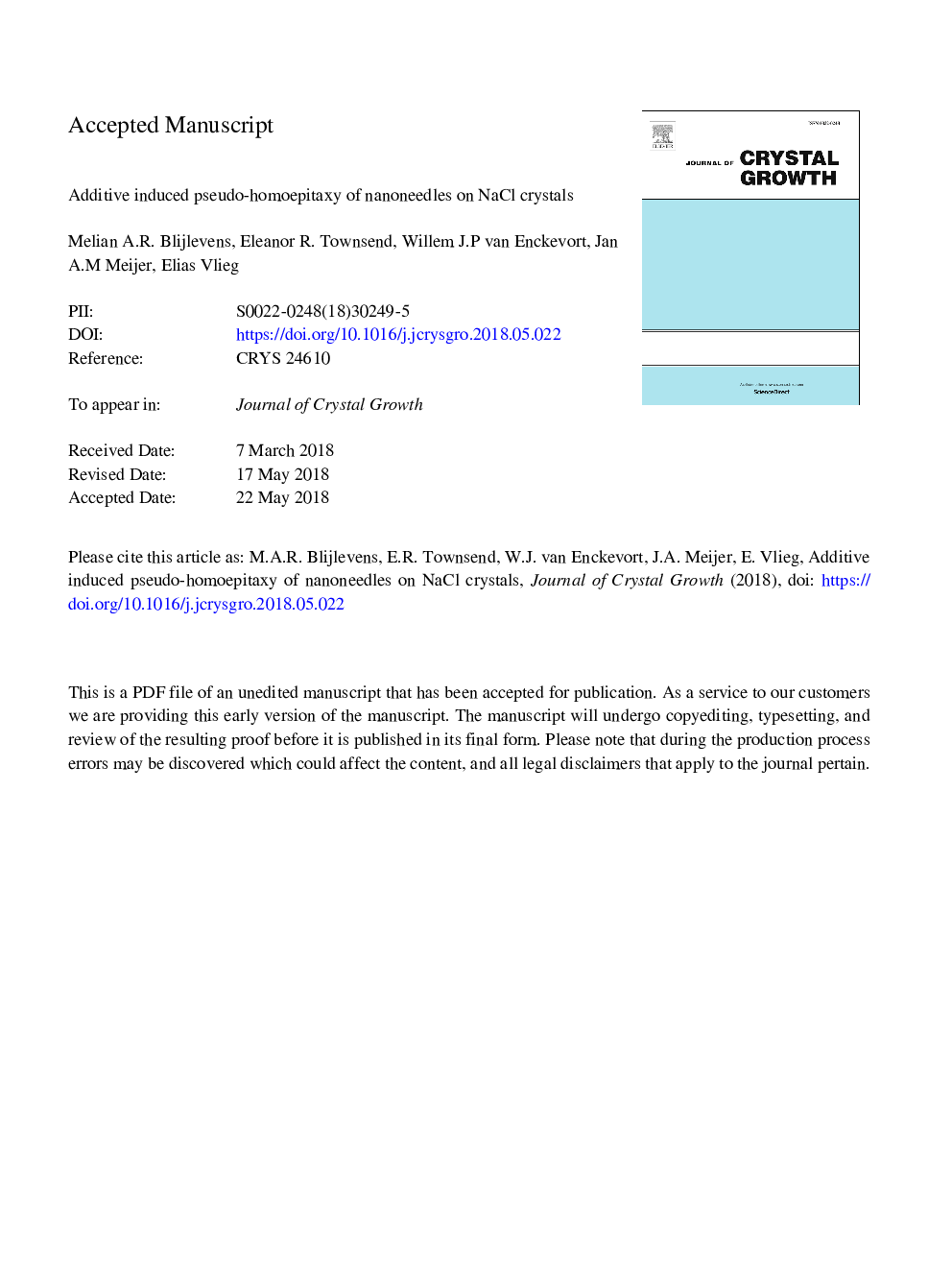| Article ID | Journal | Published Year | Pages | File Type |
|---|---|---|---|---|
| 8148395 | Journal of Crystal Growth | 2018 | 20 Pages |
Abstract
Additives and impurities often strongly influence the growth and shape of crystals, sometimes in an unexpected way. Heteroepitaxial growth of 3D guest crystals on different substrate crystals leads to a variety of surface patterns as has commonly been reported. Homoepitaxial growth, on the other hand, generally proceeds by layer by layer growth and leads to flat surfaces with steps. In our study we found that applying a droplet of ethanol with traces of triamide additive on a (0â¯0â¯1) NaCl substrate surface results in a 3D pseudo-homoepitaxial pattern comprising of ultrathin NaCl needles ordered in a “Mondriaan-like” arrangement. This is a consequence of small amounts of water in the ethanol, absorbed from the ambient, dissolving NaCl from the substrate, followed by poisoning the substrate surface by additive adsorption, which inhibits NaCl regrowth later on. At the last phase of droplet evaporation the NaCl supersaturation becomes very high and epitaxial crystal needles develop, starting from several oriented 3D nuclei on the poisoned substrate surface. This leads to a network of epitaxial NaCl needles each pointing toward one of the four perpendicularâ¯ã1â¯0â¯0ãâ¯directions on the (0â¯0â¯1) NaCl substrate. This peculiar phenomenon of 3D pseudo-homoepitaxy results from a subtle interplay between crystal dissolution, additive blocking and final growth at high supersaturation.
Related Topics
Physical Sciences and Engineering
Physics and Astronomy
Condensed Matter Physics
Authors
Melian A.R. Blijlevens, Eleanor R. Townsend, Willem J.P. van Enckevort, Jan A.M. Meijer, Elias Vlieg,
